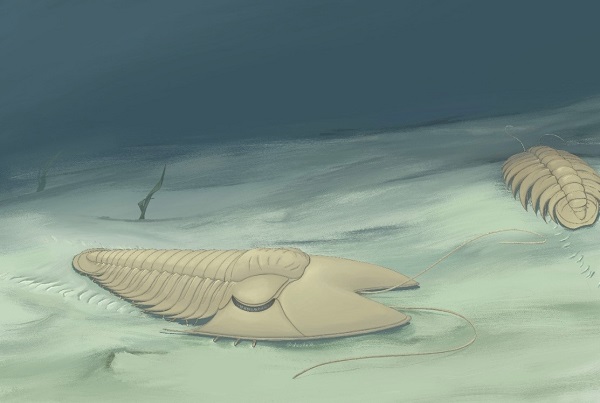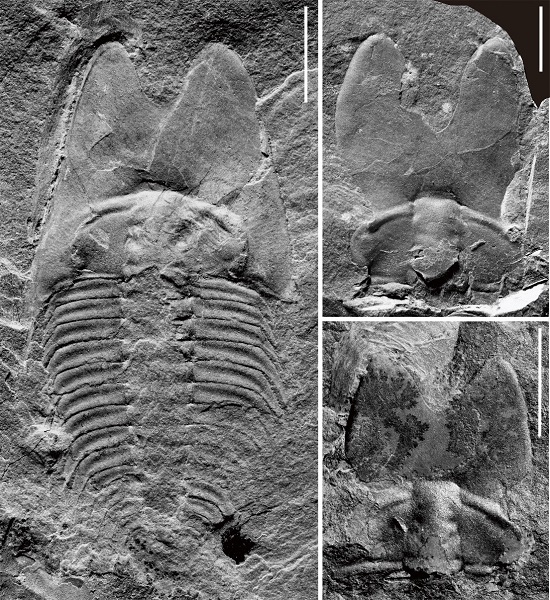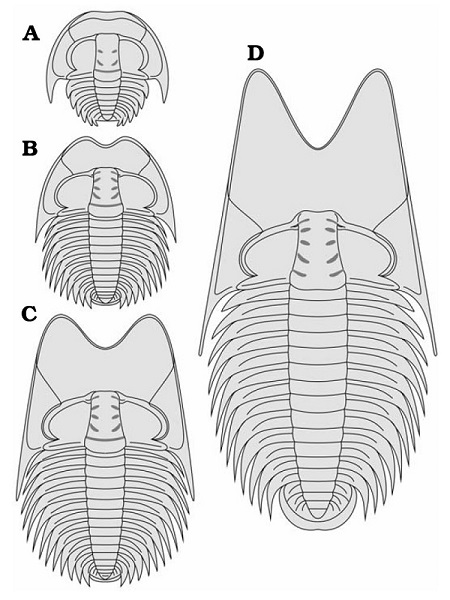 中国科学院战略性先导科技专项(B类)
中国科学院战略性先导科技专项(B类)
关键地史时期生物与环境演变
Processes and Mechanisms of Organismal and Environmental Evolution during the Critical Intervals in Earth Historye
Trilobites achieved their maximum generic diversity in the Cambrian. However, unlike this diversity measure, the morphological disparity of trilobites based on cranidial outline reached the peak in the Middle to Late Ordovician. Early to middle Cambrian trilobites with a specialized cephalon are rare, especially among the ptychoparioids, a group of libristomates featuring the so-called "generalized" bauplan. Even with a few exceptions, ptychoparioids exhibit a monotonous pattern of head specialization, characterized by additional cephalic border spines.
Recently, leading by Prof. ZHAO Fangchen, postgraduate SUN Zhixin and Dr. ZENG Han from the Nanjing Institute of Geology and Palaeontology, Chinese Academy of Sciences (NIGPAS) described a ptychopariid trilobite with an unusual cephalic morphology, Phantaspis auritus gen. et sp. nov. from the middle Cambrian (Miaolingian, Wuliuan) Mantou Formation in Shandong Province, North China. This unique trilobite provides new insights into the morphological range and structural foundation of the cephalic specialization in Cambrian trilobites. This work has been published as "Editors' Choice" in Acta Palaeontologica Polonica.
Phantaspis is characterized by a cephalon with an extended anterior area of double-lobate shape resembling a pair of rabbit ears in later ontogenetic stages, which represents a form of specialization in a Cambrian trilobite that was not repeated in any younger trilobites. This illustrates the diversity of Cambrian trilobites in morphotypes and provides an example of ptychoparioid cranidial outline variation during the middle Cambrian caused by specialisation.
The extended cephalon of Phantaspis is reminiscent of certain sediment feeders with a specialized cephalon, for example species of Harpina and Trinucleidae. However, in Phantaspis the anterior border was not thickened as those of the above groups. Other than adaptation to a particular life habit, further possibilities should be considered. The cephalicshape seen in Phantaspis may have reduced the risk of predation by increasing the effective size of Phantaspis, thus making it harder to be eaten by predators, such as other trilobites. In addition, the development and stabilization of cranidial morphology associated with sexual maturity suggests a possibility of sexual selection, similar to ‘beetle’-like horns known from other trilobites, which are assumed to reflect this type of selective strategy.
This research was supported by grants from the Strategic Priority Research Program (B) of the Chinese Academy of Sciences the National Natural Science Foundation of China, and the State Key Laboratory of Palaeobiology and Stratigraphy.
Reference: Sun, Z.X., Zeng, H., Zhao, F.C.*, 2020. A new middle Cambrian trilobite with a specialized cephalon from Shandong Province, North China. Acta Palaeontologica Polonica, 65. doi:https://doi.org/10.4202/app.00753.2020.

Artistic reconstruction of Phantaspisauritus, by HUO Xiuquan

Nearly complete exoskeleton (left) and cranidium (right) of Phantaspisauritus gen. et sp. nov.

Reconstructions of the dorsal exoskeleton and life cycle of Phantaspisauritus gen. et sp. nov.